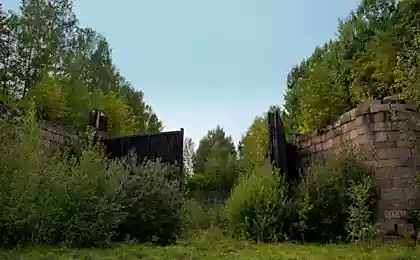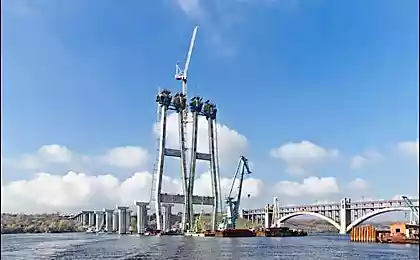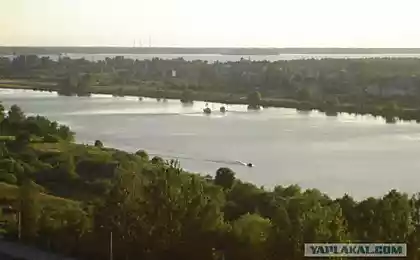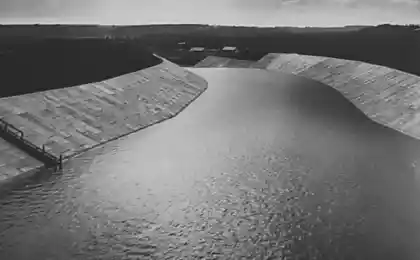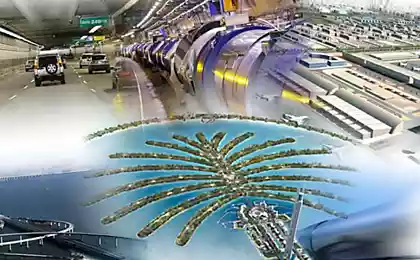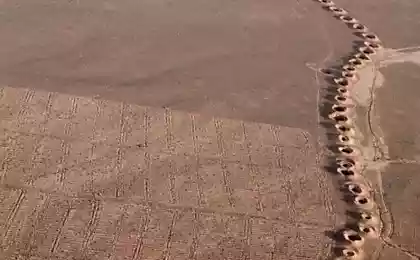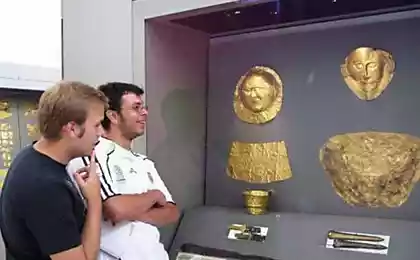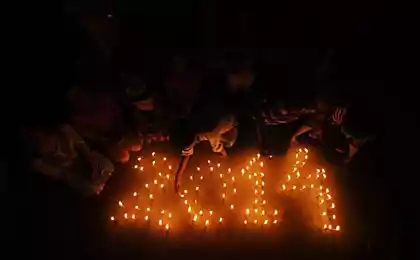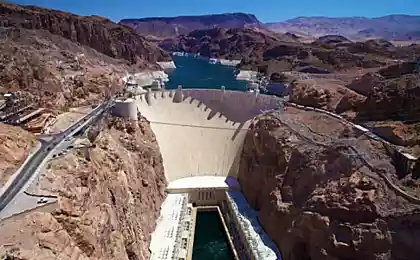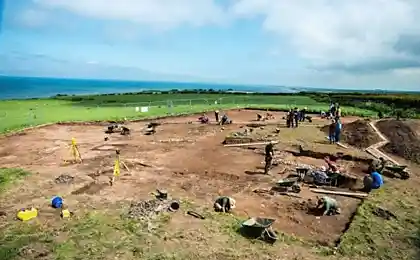1002
The grand waterworks.
Probably many times already wrote about this grandiose hydraulic building-Moscow Canal - connects Moscow with the Volga River. Located in Moscow and Tver regions of Russia, partly flows through the city of Moscow. The length of 128 km. The width of the channel on the surface - 85 m, at the bottom - 45 m, depth - 5, 5 m. I'll photographs taken during the river cruise from Moscow to Tver in the past year on the ship "Cosmonaut Yuri Gagarin»
Of course, I initially knew that I would get a lot of impressions from the trip on the Moscow Canal, but did not think it would be so deep. When you go close to the waterworks and get into the gateway is difficult to imagine that it was built virtually by hand in the past century.
My journey started here is a northern river station.
A channel was opened July 15, 1937 as the channel Moscow - Volga. Construction of Moscow-Volga Canal began in September 1932 and lasted for 4 years and 8 months. During the construction of the channel used the labor of prisoners of the Gulag (14 September 1932 for the construction of the canal was created Dmitlag, which lasted more than five years).
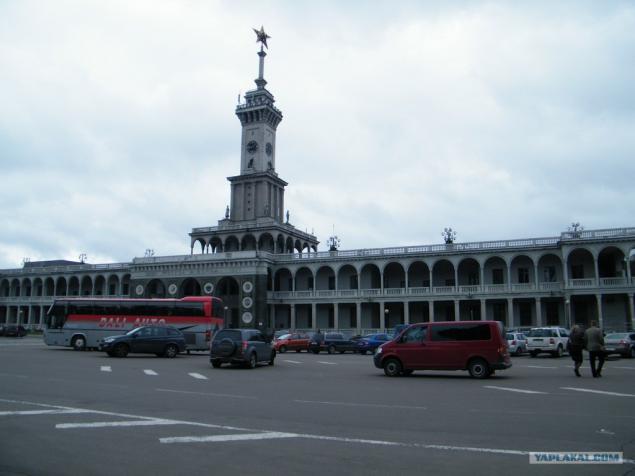
How it all began
By the early 30s Moscow does not have enough drinking water. Rublevsky water supply could not meet the growing needs of the capital in the water. Moscow River became shallow enough that it could be forded in front of the Kremlin in the place where now adorns the Great Stone Bridge. The entire water supply system served the city of 15 million. Buckets of water. And the population has increased to 3 million. Man.
And then the eyes turned to the far from Moscow, the Volga. This is the only full-flowing river Mother could save the city from a growing lack of water. But the Volga flowed over the hill, north of the Klin-Dmitrov ridge, which reach heights of nearly sixty meters above the Moskva River. This depth dig a canal seemed crazy stunt, the more distance - 128 kilometers in a straight line!
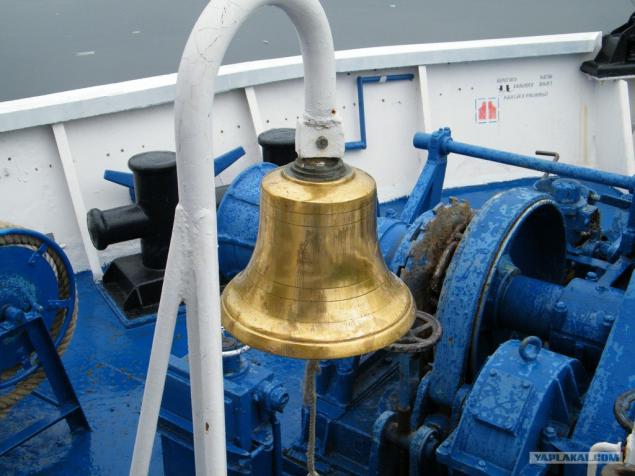
How do we get a lot of water? Engineers decided to block the Volga dam near the village Ivankovo, near the mouth of the river Dubna. In the spring tide the river abuts the overflow dam and forms the new man-made lake - Ivankovskoe reservoir, the first "Moscow Sea". Part of its water will continue the path of the old Volga channel, the other part abruptly turn to the south, in the artificial channel, and high water ladder starts to climb to a height of nine homes, to continue to go on smooth and wide water-bridge and then down the steep southern stairs Moscow River.
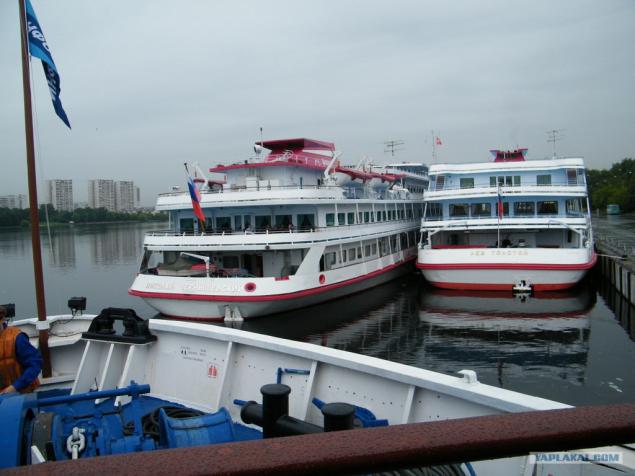
It has been proposed several options for the route of the channel. After much debate, May 20, 1932 the Moscow City Party Committee has selected "Dmitrov" project, and the next day the engineering group is already designated future highway pegs.

The canal was to take the shortest route between the rivers Volga and Moscow: the distance from the ancient village of Tushino to the mouth of the river Dubna, a tributary of the Volga, was 130 km. A high ridge of hills and valleys with the origins small rivers planning elk turn into a continuous water many kilometers Bridge. To him from two sides - from the Volga and the Moskva river - it was necessary to raise the water ladder, to this route to send the water and ships from the Volga to Moscow River.

Target designers and approved by the Government of the track channel will inevitably crosses a certain number of villages. Some villages also fall within the flood zone of six newly formed reservoirs. According to the financial report of 6261 was subject to the transfer of the NKVD courtyard. Around it was moved about 200 villages. Relocation to the newly allocated area were resettled to severe stress.
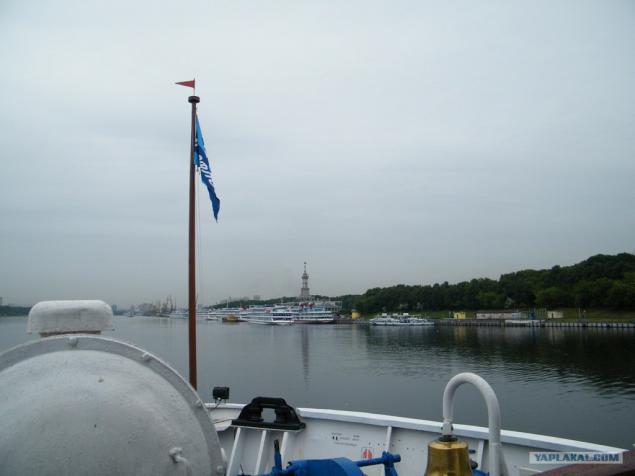
The scale of construction
Construction unfolded quickly and decisively. A year has passed since then, when the first stakes were driven on the road. Where not long ago prospectors scare grouse broods, is now all over the canal construction boomed. She worked about 200 excavators - until none of the construction of the world did not have such excavator fleet. To track channel summed Railways, the train which could take away at a time of almost 50 thousand tons of cargo. Under the new highways swept thousands of truck and rail car. The entire scope of work from one end of the entangled web of telephone and telegraph wires. At night on the construction site stood the electric glow. There were also hydromonitors first mastered here as an engineer Nikolai Kholin. Pumping System, designed by young professionals, were built at the Moscow plant "Borets". For the channel operates the largest plants in the country.
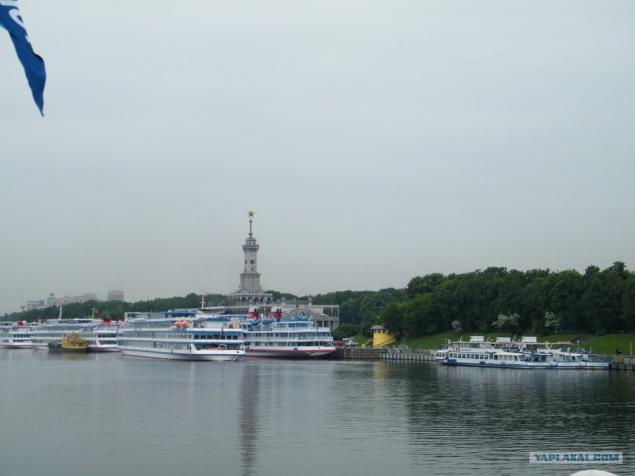
On the road and in quarries channel laid out more than 200 million. Cubic meters. land, laid about 7 million. tons of concrete. To service the building was laid 700 km of railway lines. Tens of hundreds of locomotives and railcars transported the excavated soil to the low Klyaz'ma understand where grown mountain land, and the way the landfill continuously transferred from place to place. A huge army of labor was busy unloading railway platforms and relaying way.
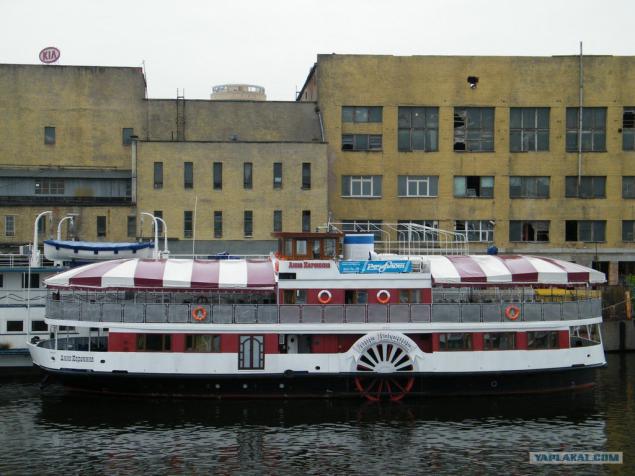
Dmitlag
For the construction of the canal it was created Dmitrovlag - the largest association of camp NKVD. Created by Order 889 of September 14, 1932 for use of prison labor in the construction of Moscow-Volga Canal them. Stalin. Dmitlag occupied buildings of Boris and Gleb Monastery.
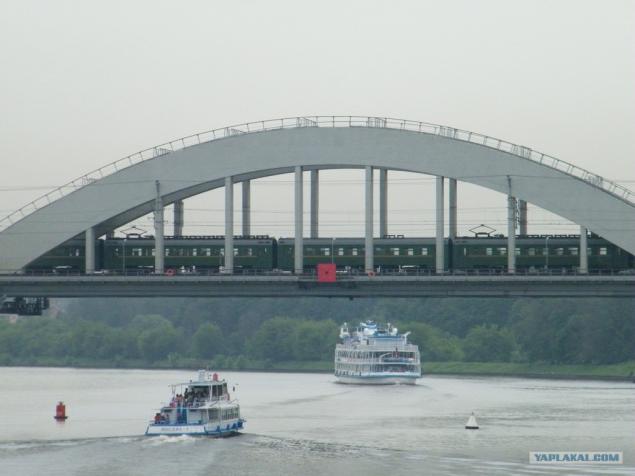
In September 1933 Dmitlag began arriving prisoners under escort from the Leningrad and Central Asia, and Temnikovsky Vishera camps Sarov ITL and Siberia. On 1 January 1936 the number of prisoners Dmitlag increased to 192 thousand people.

Construction on the canal had first skilled workers needed for the construction of complex engineering structures, it is itself prepared and trained the staff.
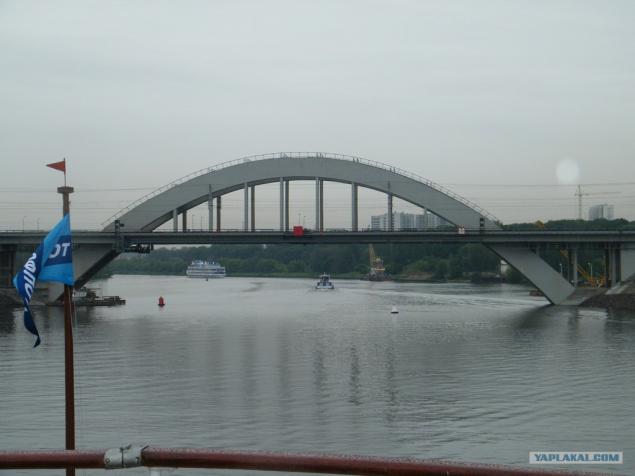
Dmitrov, near the building were created courses that prepare specialists 43 major specialties. So building received: foremen, junior and senior technicians of different specialties, laboratory of concrete and soil, machinists and stokers for excavators, installers, Motor drivers and welders.
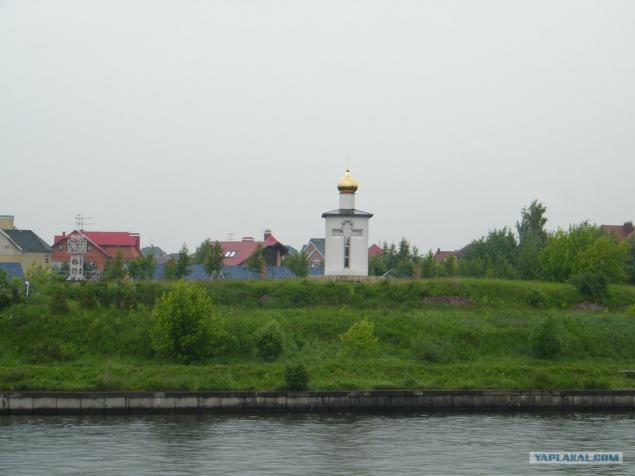
Filling water
March 23, 1937 followed by the decision to "stop the Volga", that is to start filling the Moscow Sea and the Channel. On this day, full-flowing spring Volga angrily carried their water through the dam spans. Chief Engineer calmly, as if he did it every day, ordered to close the road to the east of the Volga. One by one, dropped heavy metal shields. And when slowly and power down the last panel, the Volga was locked. The first time in thousands of years of her life stopped the mighty river will and human labor.
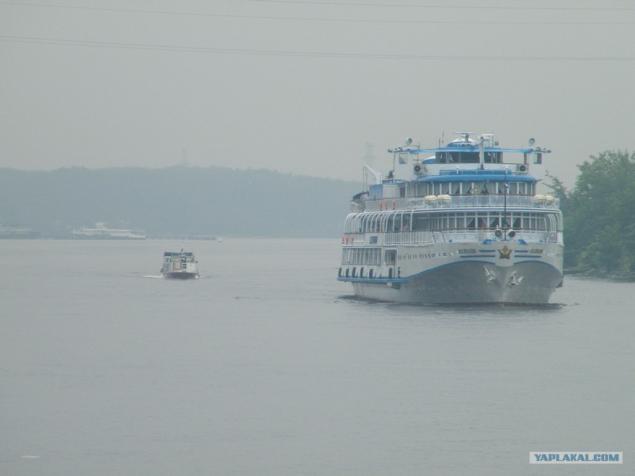
After 13 days, the chief engineer reported: "Moscow is full of the sea!" Then he gave the order to open panels concrete dam, to skip to the east of the Volga excess water. Volga was finally subdued.
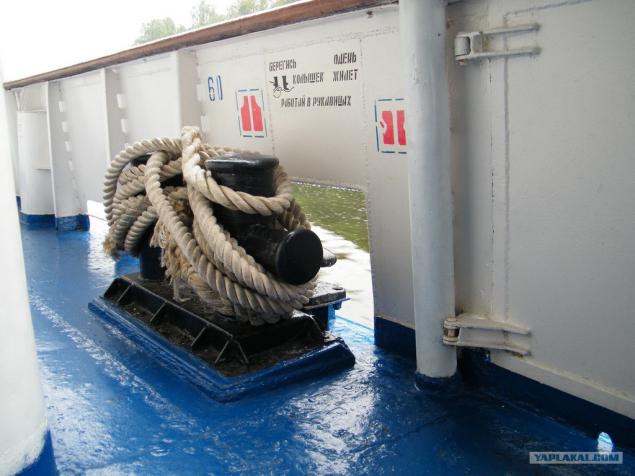
So Volga came to Moscow. The water level at the Kremlin rose nearly 3 m.
Since 1947, the channel is the modern name of Moscow Canal.
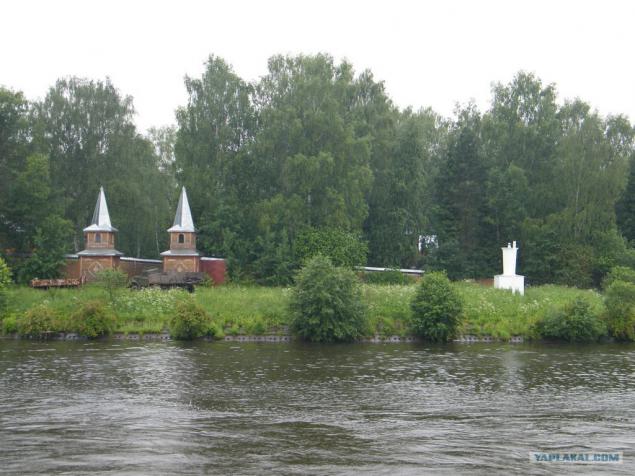
Source:
Of course, I initially knew that I would get a lot of impressions from the trip on the Moscow Canal, but did not think it would be so deep. When you go close to the waterworks and get into the gateway is difficult to imagine that it was built virtually by hand in the past century.
My journey started here is a northern river station.
A channel was opened July 15, 1937 as the channel Moscow - Volga. Construction of Moscow-Volga Canal began in September 1932 and lasted for 4 years and 8 months. During the construction of the channel used the labor of prisoners of the Gulag (14 September 1932 for the construction of the canal was created Dmitlag, which lasted more than five years).

How it all began
By the early 30s Moscow does not have enough drinking water. Rublevsky water supply could not meet the growing needs of the capital in the water. Moscow River became shallow enough that it could be forded in front of the Kremlin in the place where now adorns the Great Stone Bridge. The entire water supply system served the city of 15 million. Buckets of water. And the population has increased to 3 million. Man.
And then the eyes turned to the far from Moscow, the Volga. This is the only full-flowing river Mother could save the city from a growing lack of water. But the Volga flowed over the hill, north of the Klin-Dmitrov ridge, which reach heights of nearly sixty meters above the Moskva River. This depth dig a canal seemed crazy stunt, the more distance - 128 kilometers in a straight line!

How do we get a lot of water? Engineers decided to block the Volga dam near the village Ivankovo, near the mouth of the river Dubna. In the spring tide the river abuts the overflow dam and forms the new man-made lake - Ivankovskoe reservoir, the first "Moscow Sea". Part of its water will continue the path of the old Volga channel, the other part abruptly turn to the south, in the artificial channel, and high water ladder starts to climb to a height of nine homes, to continue to go on smooth and wide water-bridge and then down the steep southern stairs Moscow River.

It has been proposed several options for the route of the channel. After much debate, May 20, 1932 the Moscow City Party Committee has selected "Dmitrov" project, and the next day the engineering group is already designated future highway pegs.

The canal was to take the shortest route between the rivers Volga and Moscow: the distance from the ancient village of Tushino to the mouth of the river Dubna, a tributary of the Volga, was 130 km. A high ridge of hills and valleys with the origins small rivers planning elk turn into a continuous water many kilometers Bridge. To him from two sides - from the Volga and the Moskva river - it was necessary to raise the water ladder, to this route to send the water and ships from the Volga to Moscow River.

Target designers and approved by the Government of the track channel will inevitably crosses a certain number of villages. Some villages also fall within the flood zone of six newly formed reservoirs. According to the financial report of 6261 was subject to the transfer of the NKVD courtyard. Around it was moved about 200 villages. Relocation to the newly allocated area were resettled to severe stress.

The scale of construction
Construction unfolded quickly and decisively. A year has passed since then, when the first stakes were driven on the road. Where not long ago prospectors scare grouse broods, is now all over the canal construction boomed. She worked about 200 excavators - until none of the construction of the world did not have such excavator fleet. To track channel summed Railways, the train which could take away at a time of almost 50 thousand tons of cargo. Under the new highways swept thousands of truck and rail car. The entire scope of work from one end of the entangled web of telephone and telegraph wires. At night on the construction site stood the electric glow. There were also hydromonitors first mastered here as an engineer Nikolai Kholin. Pumping System, designed by young professionals, were built at the Moscow plant "Borets". For the channel operates the largest plants in the country.

On the road and in quarries channel laid out more than 200 million. Cubic meters. land, laid about 7 million. tons of concrete. To service the building was laid 700 km of railway lines. Tens of hundreds of locomotives and railcars transported the excavated soil to the low Klyaz'ma understand where grown mountain land, and the way the landfill continuously transferred from place to place. A huge army of labor was busy unloading railway platforms and relaying way.

Dmitlag
For the construction of the canal it was created Dmitrovlag - the largest association of camp NKVD. Created by Order 889 of September 14, 1932 for use of prison labor in the construction of Moscow-Volga Canal them. Stalin. Dmitlag occupied buildings of Boris and Gleb Monastery.

In September 1933 Dmitlag began arriving prisoners under escort from the Leningrad and Central Asia, and Temnikovsky Vishera camps Sarov ITL and Siberia. On 1 January 1936 the number of prisoners Dmitlag increased to 192 thousand people.

Construction on the canal had first skilled workers needed for the construction of complex engineering structures, it is itself prepared and trained the staff.

Dmitrov, near the building were created courses that prepare specialists 43 major specialties. So building received: foremen, junior and senior technicians of different specialties, laboratory of concrete and soil, machinists and stokers for excavators, installers, Motor drivers and welders.

Filling water
March 23, 1937 followed by the decision to "stop the Volga", that is to start filling the Moscow Sea and the Channel. On this day, full-flowing spring Volga angrily carried their water through the dam spans. Chief Engineer calmly, as if he did it every day, ordered to close the road to the east of the Volga. One by one, dropped heavy metal shields. And when slowly and power down the last panel, the Volga was locked. The first time in thousands of years of her life stopped the mighty river will and human labor.

After 13 days, the chief engineer reported: "Moscow is full of the sea!" Then he gave the order to open panels concrete dam, to skip to the east of the Volga excess water. Volga was finally subdued.

So Volga came to Moscow. The water level at the Kremlin rose nearly 3 m.
Since 1947, the channel is the modern name of Moscow Canal.

Source:

